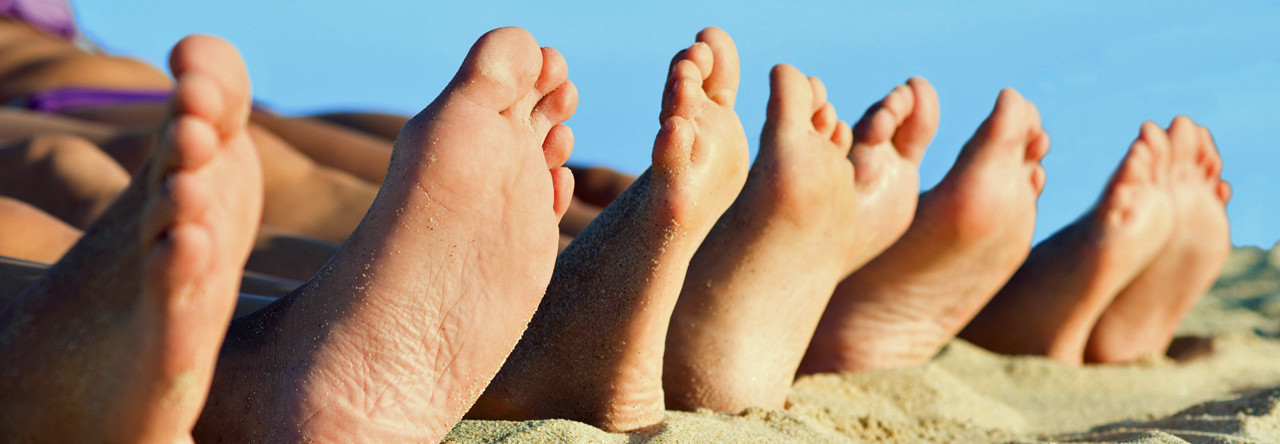The most common reason for foot pain is planter fasciitis, or heel pain. Sometimes referred to as heel spur syndrome, planter fasciitis can be present with or without an actual bony spur.
Stepping down on the foot, especially just getting up in the morning or after sitting for an extended time, can cause immediate shooting planter fasciitis pain. And pressing harder on a sore heel, the way some do with a foot that’s fallen asleep, causes planter fasciitis pain worsen. Starting exercise without warming up, Planter fasciitis flares up when the planter fascia ligament that stretches from the heel to the ball of the foot – which also supports the arch – becomes inflamed. Planter fasciitis is a serious condition and should not be ignored.
Heel spurs and planter fasciitis typically occur in people with flat feet and can usually be avoided by making a special effort to wear support shoes with arch support. Otherwise, the arch starts to collapse and stretches beyond its limits, leading to possible muscle tears and bone spurs.
Additionally high arches that pull on the muscles, tight calf muscles from lack of stretching or muscle tension that pulls away a piece of the bone can also cause planter fasciitis. In severe and chronic cases, heel spurs may require surgical correction.
Treating planter fasciitis consists of:
• Taking pressure off the foot
• Always wearing appropriate footwear with insoles.
• Using a heel cup, heel pad, heel cushion or slight heel lift to relieve pressure and reduce inflammation.
• Keeping calf muscles at a proper length using a night splint.
• Correcting leg length discrepancy via an adjustable heel lift.
• Ice massaging to reduce inflammation.
• Stretching calf muscle to reduce tightness.
Category: Flat Feet
Dry cracking heels (xeorosis) is a condition of thickening and fissuring (cracking of the bottom part of the heels). This is a very common problem and in most people it is only a nuisance and a cosmetic problem. But when the problem persists, especially in diabetes or people with impaired vascular sufficiency, this can lead to a serious medical problem.
Common symptom of cracked heels are:
• Peeling and cracked skin
• Hard growth of skin on the outer edge of the heel
• Pain while walking
• Increased pain in thin soles or open back shoes
• Red or flaky patches on the heel of the foot
• Yellow or dark skin on the heel
• Itchy skin
Most common causes are:
• Dry skin
• Prolonged standing
• Wearing shoes with an open back
• In active sweat glands
• Misaligment of the metatarsal bones
• Flat feet
• High arched feet
• Improperly fitting shoes
• Athlete’s foot
• Surgery to the lower extremities
• Psoriasis
• Thyroid disease
• Diabetes
The best treatment for cracked heels are:
• Appling a moisturizing cream
• Using a pumice stone
• Wearing closed backed shoes
• Wearing shoes with a good shock absorbing sole
Over-pronation, or flat feet, is a common bio-mechanical problem that occurs in the walking process when a person’s arch collapses upon weight bearing. Normal pronation, or “turning inward” of the foot is necessary as the foot adapts to the ground. With excessive pronation/ over pronation, the arch flattens, collapses, and soft tissues stretch. When this happens, joints that should be stable now become very loose and flexible.This motion can cause extreme stress or inflammation on the plantar fascia, potentially causing severe discomfort and leading to other foot problems.
Over-pronation is very prominent in people who have flexible, flat feet. At first, excess pronation may cause fatigue. As the problem gets worse, strain on the muscles, tendons, and ligaments of the foot and lower leg can cause permanent problems and deformities.
There are many causes of flat feet. Obesity, pregnancy or repetitive pounding on a hard surface can weaken the arch leading to over-pronation. Often people with flat feet do not experience discomfort immediately, and some never suffer from any discomfort at all. However, when symptoms develop and become painful, walking becomes awkward and causes increased strain on the feet and calves.
Orthotics can be used and should be designed with appropriate arch support and medial rearfoot posting to prevent the over-pronation.
Footwear should also be examined to ensure there is a proper fit. Footwear with a firm heel counter is often recommended for extra support and stability. Improperly fitting footwear can lead to additional foot problems.
Over pronation is linked to just about every foot condition, including but not limited to bunions, metatarsalgia, osteochondrosis, corns, calluses and hammer toes.
